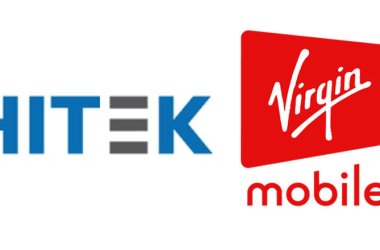The IT department of 2020 could disappear as a separate entity and become embedded in departments throughout the entire organisation, according to analyst Forrester.
Speaking at its CIO Forum event in London, analysts discussed some of the ongoing shifts which are threatening to disrupt the way that IT departments operate in future.
In front of a room of CIOs and IT decision makers from enterprises across Europe, a team of Forrester analysts, research directors Christopher Mines and Pascal Matzke, and principal analyst John C. McCarthy, discussed how the current landscape is set to evolve, setting out the predictions for 2020.
How will technology affect the enterprise?
With various aspects of technology becoming heavily commoditised, there is prospect that in the coming years IT will fade into the background and become an on-tap resource, rather than a critical competitive advantage within a business.
So will technology eventually become a non-differentiating commodity, or will it remain central to the way that businesses create their own offerings?
The Forrester view, shared by the delegate audience, is that enterprises will continue to use technology to gain a competitive advantage. However, just as a bank creates its own innovative mobile front-end systems to differentiate from competitors while running on commoditised systems, this drive for agility and greater engagement will mean a shift in focus away from internal systems, and towards the customer. This will provide the basis of a move to a world of ‘software as the brand’.
“It is important to recognise that there are significant elements of enterprise technology that are commoditising, or have already commoditised – the core infrastructure, the virtual servers, the enterprise applications, the core systems of record,” said Mines. “But there is a new class of technology that is aimed at customer engagement, and aimed at the front end of the business. This is where software becomes the brand, and becomes the identity of many companies across a range of industries, retaining its differentiating value and visibility among customers and employees.”
How will companies architect and deploy business technology solutions in 2020?
As enterprise IT moves towards greater automation and use of external cloud based services, the role of the IT department in provisioning and deploying applications is changing.
But will this mean that IT departments will continue to design, manage and own their applications and infrastructure, or will there be a wholesale shift to apps and processes being delivered ‘as-a-service’ by external business process specialists?
Again delegates largely agreed with the analyst view: “Companies will increasingly architect and deploy solutions from what we already see as a growing pool of as-a-service providers, with IT skills still being essential,” Mines said. “However staff will play the role of orchestrator and integrator of those external services and service providers, rather than internally building and owning those applications themselves.”
What skills and structure will the technology organisation of 2020 have?
Enterprises are already seeing other areas of the business outside of the IT department investing in technology, such as in sales or marketing departments. This trend is also being driven by the rapid increase in IT literacy across all areas of an organisation, as consumerisation means that all aspects of the business become tech-savvy.
Forrester asked whether this trend is set to continue into the next decade, with IT becoming embedded and to some extent invisible, throughout the organisation, or whether the trend will reverse to keep the IT department’s centralised position in providing applications and infrastructure.
While the audience reached no consensus on where the future might lie, Forrester’s view is that the IT function is set to become more embedded throughout the organisation.
“IT will be embedded in the marketing sales, customer service and manufacturing organisations,” Mines concluded. “The skillsets are still there and used to orchestrate those external service providers, but there will be no identifiable or central IT organisation – our call is that that will be a thing of the past by 2020.”
What will the supplier portfolio look like?
Cloud is already a disruptive force on the supplier market, with new vendors threatening to steal the lunch of the more longstanding IT firms. Mobile, social and analytics are also driving unprecedented change within the industry, and startups in these areas could begin to challenge the companies which became success stories of the last decade, such as Google and Salesforce. Meanwhile the likes of Capgemini and Accenture have been investing, not in services firms, but in startup companies in areas such as analytics.
So will the incumbent vendors be displaced by the crop of start-ups currently emerging, or will enterprise customers shudder at the thought of dealing with a seemingly infinite number of suppliers and services providers?
The audience voted strongly that enterprises will continue to look to the bigger names as they snap up the newcomer startups, as question marks remain over the ability of smaller suppliers with a narrow focus to support wider business development in the longer term.
However Forrester arrived at a split decision – concluding that by 2020 the answer will lie somewhere in between, with a dramatic shake up of the supplier portfolio to include both incumbents and startups.
“The makeup of the supplier portfolio will change pretty dramatically in both directions,” Mines said. “We think it will become a more varied mix of the innovative start-up suppliers, as well as a reliance on the established incumbents.”





